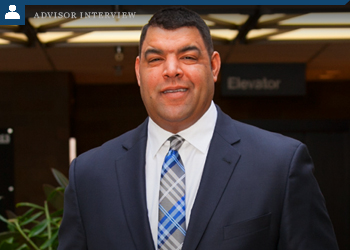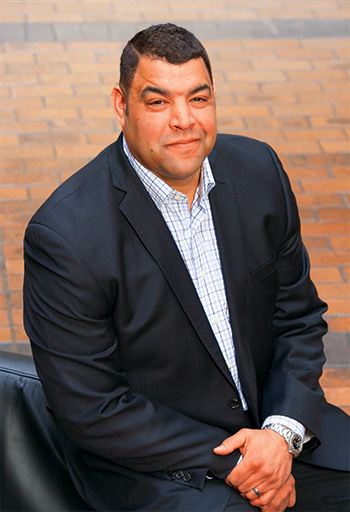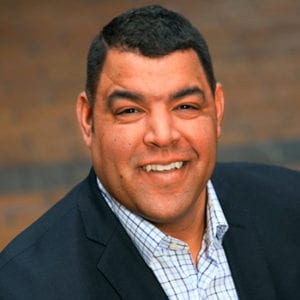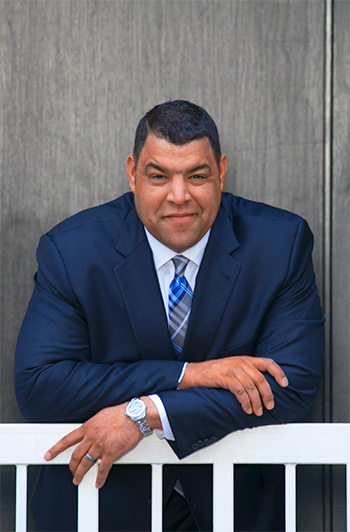Educating clients about risk-managed retirement planning
Educating clients about risk-managed retirement planning


Tedd Bradley • Lakeville, MN
Vantage Point Wealth Management • LPL Financial
Read full biography below
One cannot help but be impressed by Tedd Bradley’s background, knowledge, and commitment to the financial education of his clients and members of his community. Mr. Bradley has valuable hands-on experience “in the trenches” of the financial-services industry as both a trader and a wholesaler working with financial advisors and banks. Over the last decade and a half, he has brought that experience and expertise to his independent advisory practice, where he offers retirement income planning and a variety of other services.
Proactive Advisor Magazine: Tedd, talk about your industry experience before becoming an independent financial advisor.
I studied finance in college and was very focused after graduation on building a career in the financial industry. I started out with two well-known national firms that were primarily focused on insurance products, though they both had investment capabilities, products, and services.
I earned my investment license and was eventually assigned to a trading desk. I worked with individuals and brokers in placing trades for equities and options. This was a fast-paced and exciting environment, and I learned a tremendous amount in a short period about how the market works from an execution standpoint. It was also my first exposure to one form of active management, as I saw a fair amount of advanced options and hedging strategies being implemented.

Later, I worked as an internal wholesaler of financial products, with several major banks as my core clients. I worked with hundreds of financial advisors at these banks, which was another instructive experience. I saw both the good and the not-so-good attributes and attitudes of many advisors. It quickly became apparent to me that successful advisors had a tremendous work ethic, possessed a high level of integrity, were strong communicators and educators, and placed their clients’ needs first. Those principles are at the forefront of my current practice.
My niche has always been in retirement distribution planning and helping people plan for retirement. I believe there are two distinct stages of a person’s investment life cycle. The first one is the accumulation phase, when a client is in their early to peak earning years. This phase requires, in my opinion, a distinctively different investment approach and philosophy than the second phase of the retirement and distribution years of one’s life.
When people start to seriously think about retirement, it can be an intimidating experience. When thoughts of retirement start to surface, most people are at the very high point of their lives in terms of earning power. They start to contemplate a future without that job income, when they are not adding to their investments, and, instead, will start depleting their lifelong savings and investments. That can be a scary scenario.
I see my challenge as helping clients unravel an equation that doesn’t seem to be working in their favor. I want to help provide the education and potential solutions that will help them face retirement and their financial future with more confidence than they thought possible.
How do you approach the retirement planning process with clients?
Early on as an advisor, I built my own model for retirement income planning that I still use today. It is basically my own refinements to a bucket planning approach that incorporates a high degree of risk management.
“Active management is about mitigating risk while trying to achieve more controlled asset growth, which surprises some people.”
I first go through an extensive discovery process with a client or client couple. We identify many critical factors, such as their current assets and liabilities, their family circumstances and how they might look in the future, potential revenue sources and expenses going forward, and, most importantly, their personal goals and objectives in retirement. From an income standpoint, what do they think it will take for them to retire comfortably and do the things that they want? We have a frank discussion about the realities of their assumptions and objectives, which hopefully we can help them achieve.
 I also want to understand their past experiences with investing and their outlook on risk. In general, most retirees do not fully understand or appreciate risk, either for their overall lifestyle or their investments. While time can work in favor of younger people when it comes to investments, retirees need to be educated about sequence-of-returns issues, and we need to construct an investment plan that does not allow them to fall in a hole right at the start of their retirement.
I also want to understand their past experiences with investing and their outlook on risk. In general, most retirees do not fully understand or appreciate risk, either for their overall lifestyle or their investments. While time can work in favor of younger people when it comes to investments, retirees need to be educated about sequence-of-returns issues, and we need to construct an investment plan that does not allow them to fall in a hole right at the start of their retirement.
After the data gathering and several meetings, I build an approach that creates a road map for where they want to go. Current assets and future revenue streams form a starting point for the model, whereby we look at different time frames, potential returns and withdrawal levels, and different discrete buckets of investments, each with their own objectives and risk level. The guiding principles are to be fairly conservative in our construction of scenarios and to let specific tools, strategies, and time frames work for clients to mitigate risk.
How do time frames help mitigate risk?
For a typical client who is starting their planning about five years before retirement, we might set up a five-year bucket first, which would likely have the least aggressive growth assumptions and the lowest level of risk. As we move out in five- or 10-year increments of time to create new buckets, we can make somewhat more aggressive assumptions on returns and take on slightly more risk. The further out we go, generally, the more volatility a portfolio can withstand. The portfolio or investment strategies will be in a position to recover from potential short-term drawdowns.
Investments further out have years of growth potential, and we construct conservative growth rates that also take into account assumptions about inflation. Effectively, we are employing two levels of risk management: (1) using strategies that can manage risk in and of themselves and (2) using time as a risk mitigation tool. Over a period of 25 to 35 years, there will be plenty of time for the growth of assets, and later buckets can replenish earlier buckets as time progresses.
Where do actively managed strategies fit in the bucket approach?
The current extended period of low interest rates has become a challenge for the earliest buckets. Relatively low-risk investment alternatives of years past do not provide adequate returns at this point. Going back some years, an extremely conservative client could have even used laddered certificates of deposit for some acceptable early-year returns in retirement. That is no longer the case, and fixed-rate investments have now taken on a new element of risk themselves.
So, we have to challenge ourselves as advisors to become more creative. Actively managed strategies can be one alternative and usually represent a good tool for delivering more measured returns with a high degree of risk management.
I teach concepts around active management in the classes I hold for pre-retirees and retirees. Many people have little or no understanding about active management. It is not day trading or making bets on which way the market is going to go in the short term. Active management is about mitigating risk while trying to achieve more controlled asset growth, which surprises some people.
When I am finished with my explanations in class, I can see the light bulbs turning on. People in the age range of 50 to 70 have lived through some very good market times and some extremely challenging, high-volatility markets. When they understand the concept behind active management as we position it, it is naturally very appealing. I think there is also a huge benefit to actively managed strategies as a diversifier for portfolios. There are points in market cycles in which active strategies outperform passive strategies, and vice versa. To me, that point of diversification alone makes active strategies an important aspect of portfolio construction.
We are facing a potentially changing geopolitical future and always have the threat of volatility in the financial markets. For retirees who have to also consider inflation and longevity factors, it makes sense for them to adopt an investment approach that emphasizes risk management. I believe my role is to educate and guide clients through these issues and help them develop a sound retirement income plan that can withstand the test of time and varying market cycles. That approach has been successful for my practice, and I believe it has led to sustained and strong client relationships.
 Tedd Bradley is a partner of Vantage Point Wealth Management’s Lakeville, Minnesota, office. Mr. Bradley has been in the financial-services industry for more than 17 years, starting his career as an equity trader and working as a wholesaler of financial products and services in the bank channel. He later decided to “follow his passion for working with individuals” and has been an independent advisor for the last 14 years. He specializes in comprehensive financial planning and has extensive experience with investment portfolio design, estate planning, and retirement income planning.
Tedd Bradley is a partner of Vantage Point Wealth Management’s Lakeville, Minnesota, office. Mr. Bradley has been in the financial-services industry for more than 17 years, starting his career as an equity trader and working as a wholesaler of financial products and services in the bank channel. He later decided to “follow his passion for working with individuals” and has been an independent advisor for the last 14 years. He specializes in comprehensive financial planning and has extensive experience with investment portfolio design, estate planning, and retirement income planning.
Mr. Bradley is a passionate advocate for financial education and conducts regular seminars and workshops for the public on the topics of retirement planning and Social Security strategies. He often works with Minnesota State University-Mankato to present educational events on financial planning issues, including tax strategies, managing investment risk, and protection of assets from long-term health-care expenses.
A native of Bloomington, Minnesota, Mr. Bradley received a degree in finance from St. Cloud State University. He and his family live in Lakeville, where he is very active in the community. An avid sports fan and athlete, Mr. Bradley enjoys coaching basketball.
Disclosure: Tedd Bradley is a registered representative with, and securities offered through LPL Financial, Member FINRA/SIPC. Investment Advice offered through VPWM Advisors, a registered investment advisor. Vantage Point Wealth Management and VPWM Advisors are separate entities from LPL Financial. Investing involves risk, including potential loss of principal. Asset allocation and diversification does not ensure a profit or protect against a loss.
Photography by Steve Lucas


